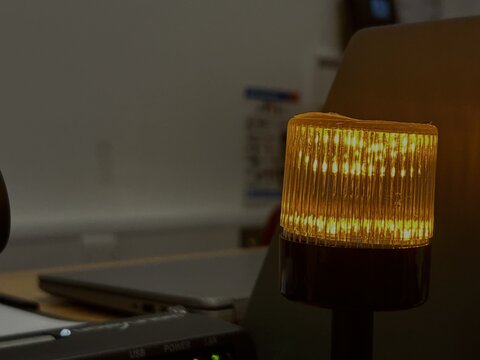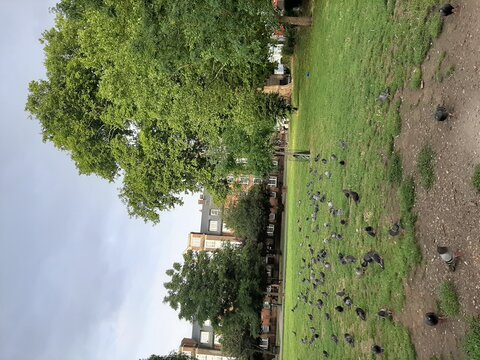Impact in Qualitative Research: Sohail Jannesari, Tanya Krupiy and Orla Phillips on photovoice and transforming learning environments

Dr Sohail Jannesari is a Research Fellow at King’s College London and a Freelance Research Consultant. Sohail teaches at the Introduction to Qualitative Research Summer School where Dr Tanya Krupiy and Orla Phillips were students this year. The Summer School is part of the Qualitative Applied Health Research Centre (QUAHRC).
In this blog, Sohail Jannesari, Tanya Krupiy and Orla Phillips reflect on how participatory and creative methods, such as photovoice, can transform learning environments, drawing on a recent exhibition at the Summer School.
At the Qualitative Applied Health Research Centre (QUAHRC), we are always exploring how participatory and creative methods can transform learning environments. Our photovoice exhibition at this year’s Introduction to Qualitative Research Summer School provides an example. At the summer school, we worked with 53 participants from a variety of backgrounds. We collectively explored key qualitative ideas through lectures, workshops, and collaborative exercises. During the course, we asked students to take photos of their experiences and feed them back in a final day exhibition.
One of our students, Orla Philips, describes the photovoice activity:
As a student at the Introduction to Qualitative Research Summer School, I found the opportunity to get creative and explore Photovoice a very interesting and empowering experience. As somebody with a background in film production, who is fairly new to academic research, using creative methods is something that came naturally to me, that I had never considered in the context of research. I decided to take photos of the classroom where the learning mostly took place, and I thoroughly enjoyed the process of exploring different ideas and communicating an idea through the lens of a camera. I will definitely consider incorporating what we have learned through our sessions on creative methods and Photovoice in my future research.
What is Photovoice?
Although what we did wasn’t strictly Photovoice, it built upon a Photovoice workshop we ran on the first day. Photovoice is a method developed by Caroline Wang and Mary Ann Burris in 1992 in rural Yunnan, China. They wanted to bring women's experiences into policy discussions and adopted an explicitly feminist lens. Wang and Burris were influenced by Brazilian educator Paulo Freire, documentary photography, and feminist theory. They aimed to shift the power to those usually excluded from decision-making processes. Paulo Freire developed literacy programmes across Brazil, working with marginalised communities to foster conscientisation, a collective awakening to social and political injustice. As part of these programmes, he used drawings, photos, and slides. Freire argued that education is never neutral, it either reinforces power or helps people challenge it. His arguments led to his imprisonment and exile by Brazil’s military dictatorship in 1964.
Feedback Through Photography
Visual methods like Photovoice offer a powerful way to capture student feedback, especially in contexts where expressing critical viewpoints can feel sensitive. During our summer school lecture on “Ethical Considerations in Qualitative Research” we saw examples of rising academic censorship, including Harvard Educational Review’s cancellation of a special issue on “Education and Palestine” and the expulsion and arrest of Pro-Palestinian students. In such environments, photography allows students to document and reflect on their learning experiences with greater freedom. While our summer school exhibition was an exploratory step, it showed how visual storytelling can create safe spaces for reflection, discussion, and the amplification of student perspectives.
One of our students, Tanya, reflects on why Photovoice is useful for exploring experiences and gathering feedback: “Photovoice provides a rich ground for exploration and discussion. When contemplating which picture to take to represent my experience of the summer school in qualitative research methods training, I found myself asking many questions: ‘Why did I choose that particular location?’, ‘Why did I select this specific scene to capture?’, ‘What does the place and space I photographed mean to me?’ I realised that images are a fertile ground for thinking about and communicating multiple layers of meaning related to the same experience. Photovoice prompts one to reflect on one’s experience in depth, which can lead to interesting explorations and discussions down the line. It is a valuable tool for expressing the multidimensionality of lived experiences, benefiting both research participants and researchers.”

Learning is growing. During the training I was able to learn and grow in a relaxed environment. Although I tilted the camera to preserve the privacy of bystanders when taking the photo, I think that the tilt in the captured image represents the fact that this training changed some of my assumptions about what qualitative research is. (Tanya Krupiy)
What We Learned
The feedback we received from the photovoice exercise complimented our survey feedback nicely. The photovoice spoke more about the joy of the summer school, the personal connections made, and the overall environment. It also helped a few students tell their evolving story of the summer school, not simply one frozen in time. In contrast, the survey feedback focussed more on the session content and technical issues. Next Summer School, we want to go further, supporting participants not only in taking photographs, but also in analysing them collectively, drawing out shared themes, tensions, and stories. We will also provide more guidance on curation. Curation is a powerful moment of interpretation, a process of deciding what gets framed, highlighted, and remembered. Finally, we hope to shape the photovoice exercise so that it contributes meaningfully to shaping and shifting university learning culture.
The feedback we received from the photovoice exercise complimented our survey feedback nicely. The photovoice spoke more about the joy of the summer school, the personal connections made, and the overall environment. It also helped a few students tell their evolving story of the summer school, not simply one frozen in time. In contrast, the survey feedback focussed more on the session content and technical issues. Next Summer School, we want to go further, supporting participants not only in taking photographs, but also in analysing them collectively, drawing out shared themes, tensions, and stories. We will also provide more guidance on curation. Curation is a powerful moment of interpretation, a process of deciding what gets framed, highlighted, and remembered. Finally, we hope to shape the photovoice exercise so that it contributes meaningfully to shaping and shifting university learning culture.